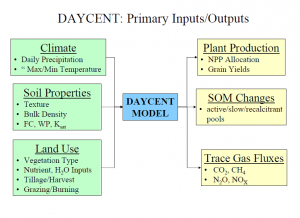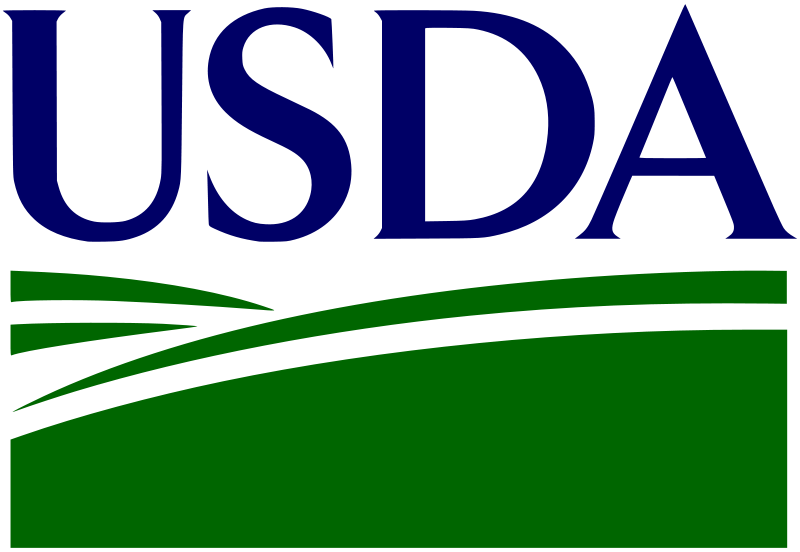Yao Zhang and Keith Paustian
Soil and Crop Sciences, CSU
DAYCENT is a daily time-step biogeochemical model. It has been widely used for the analysis of carbon and nitrogen dynamics in cropland, grassland, and forest ecosystems. The detailed description can be found at http://www.nrel.colostate.edu/projects/daycent/.

Figure 2 The primary inputs and outputs of the DAYCENT model. Figure is from presentation by Dr. Dennis Ojima.
Goal
To integrate the ecosystem simulation model DAYCENT to SWAT to better represent the ecosystem water demand and supply and the changes in ecological processes under predicted climate, land use and energy scenarios.
Objectives
- To evaluate and improve the water balance of the DAYCENT model
- To explore the relationship of soil water and the ecological variables (e.g. biomass, yield, and greenhouse gas emission) and improve the model prediction on these variables.
- To study the latest findings on the impact of climate change and elevated CO2 on crop physiology, soil organic matter decomposition, and other biogeochemical processes; parameterize the DAYCENT model according to the findings.
- To integrate DAYCENT to SWAT as an option for cropland, grassland, and forest simulation.
- To predict impacts on agricultural production and the other important ecological variables like carbon storage change and greenhouse gas emissions in response to the projected climate and land use conditions for the South Platte River Basin using SWAT-DAYCENT.
Expected Outcomes and Outputs
1) An improved DAYCENT model on water balance.
2) A set of parameters calibrated for cropland, grassland, and forest inside the study basin.
3) The estimated uncertainty on the primary predictions (e.g. drought effect on crop yield).
4) Calibrated DAYCENT model (alone), SWAT-DAYCENT model and DAYCENT-HYDRUS model as tools for eRAMS users.
5) Prediction of impacts on agricultural production and the other important ecological variables in response to the projected climate and land use conditions for the South Platte River Basin.



